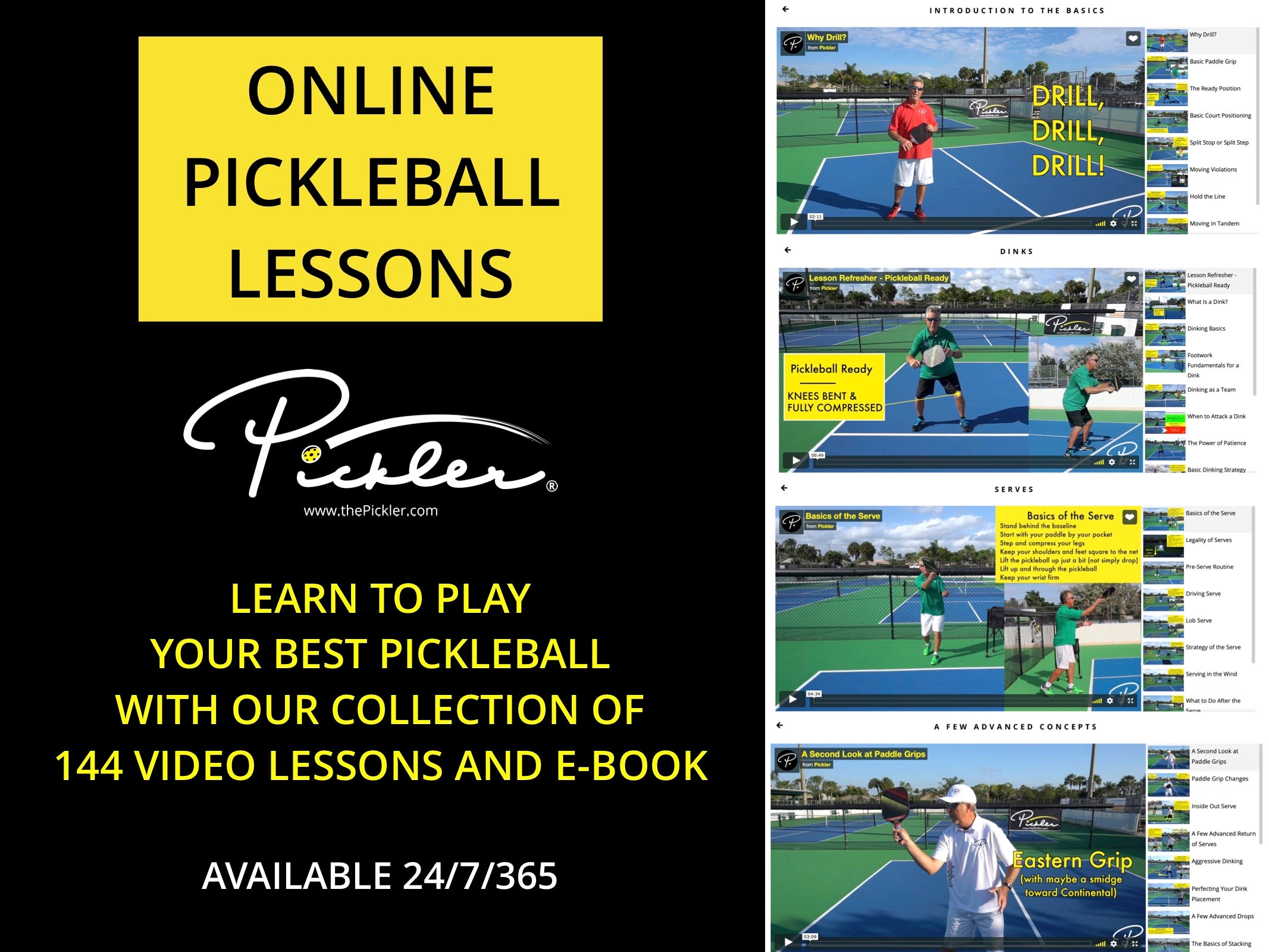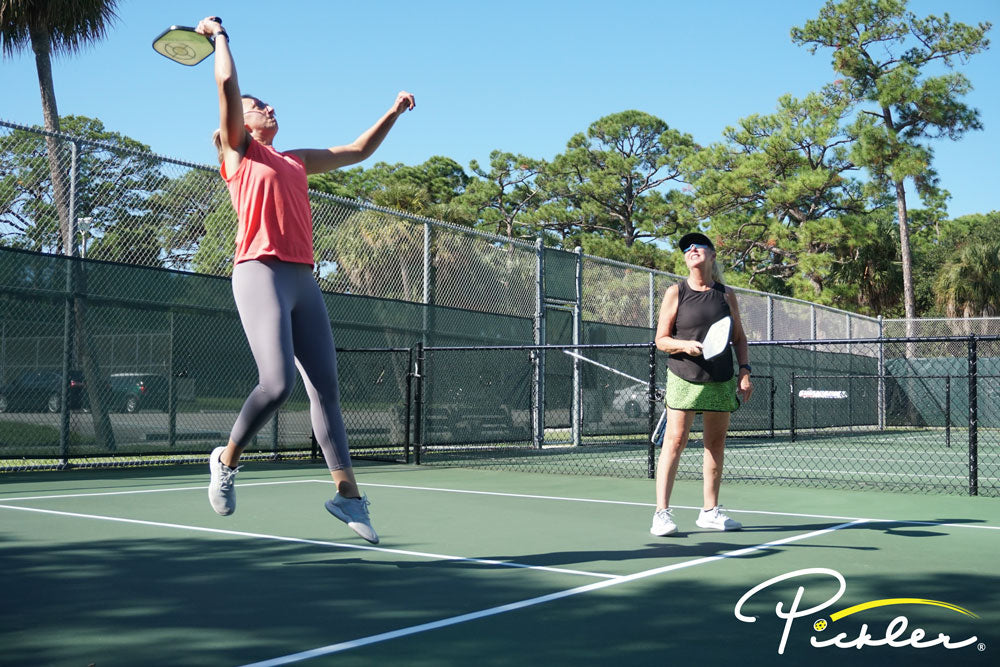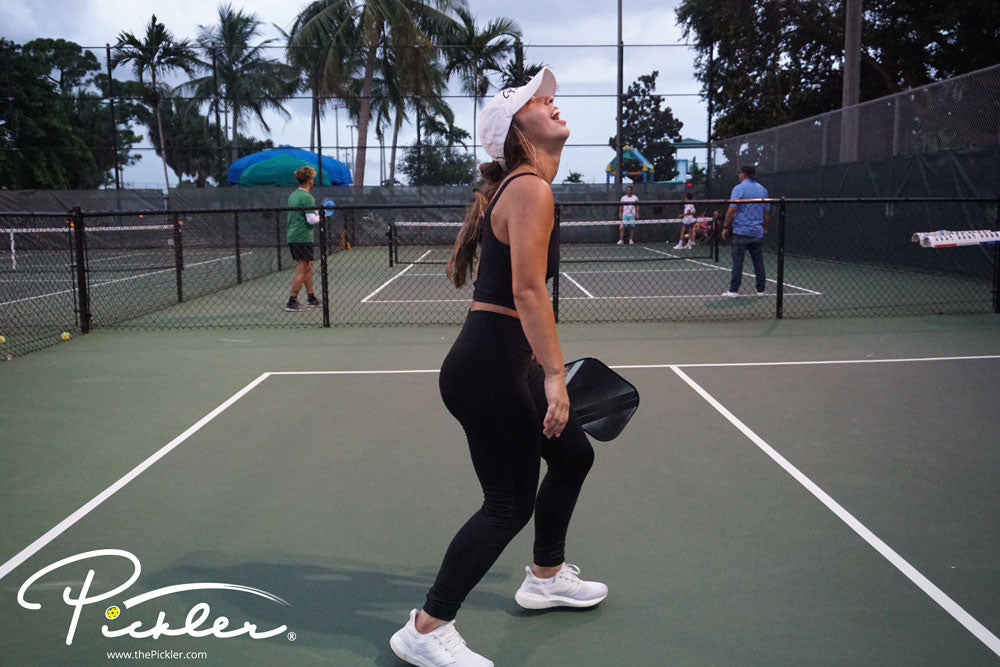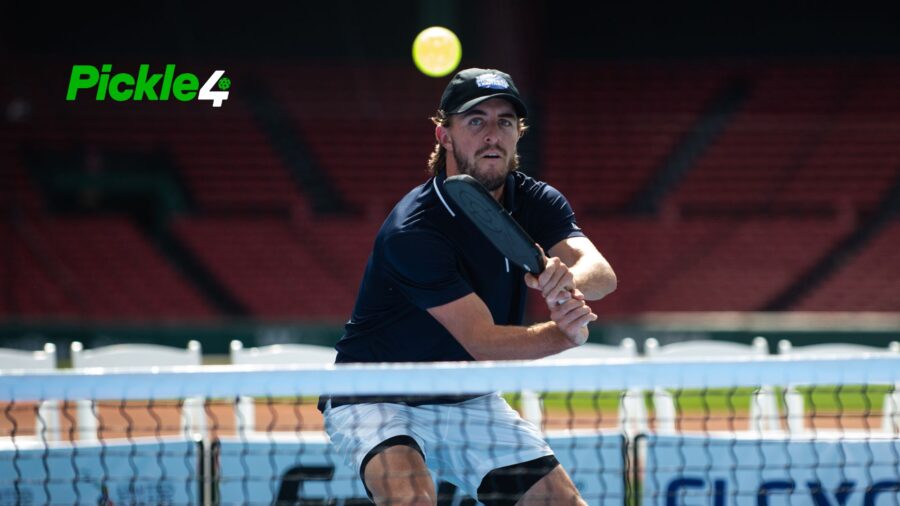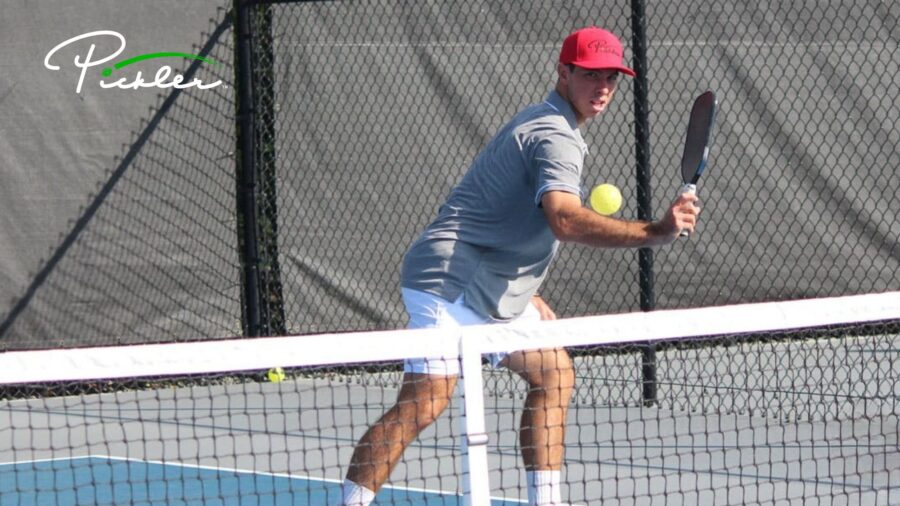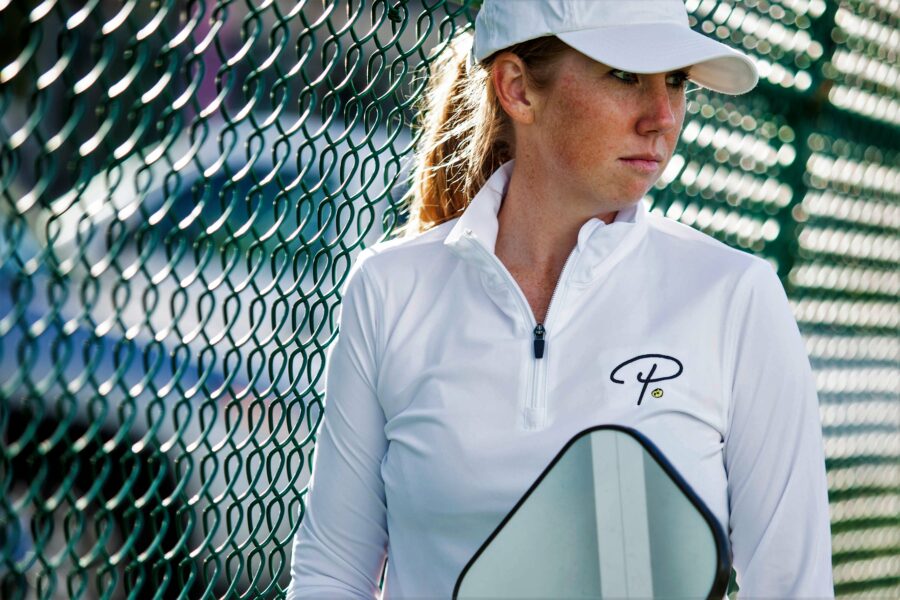The lob is becoming more and more prevalent on the pickleball courts. With the rise of the lob, it is more important than ever to know how to beat a lobber on the pickleball court. Generally speaking, there are three main strategies in beating a lobber or otherwise defending against the lob: (1) anticipating and avoiding the lob from your opponents; (2) hitting a strong overhead; and (3) effectively chasing down the lob to get back into the point. This pickleball blog will break down each of these three pickleball strategies.
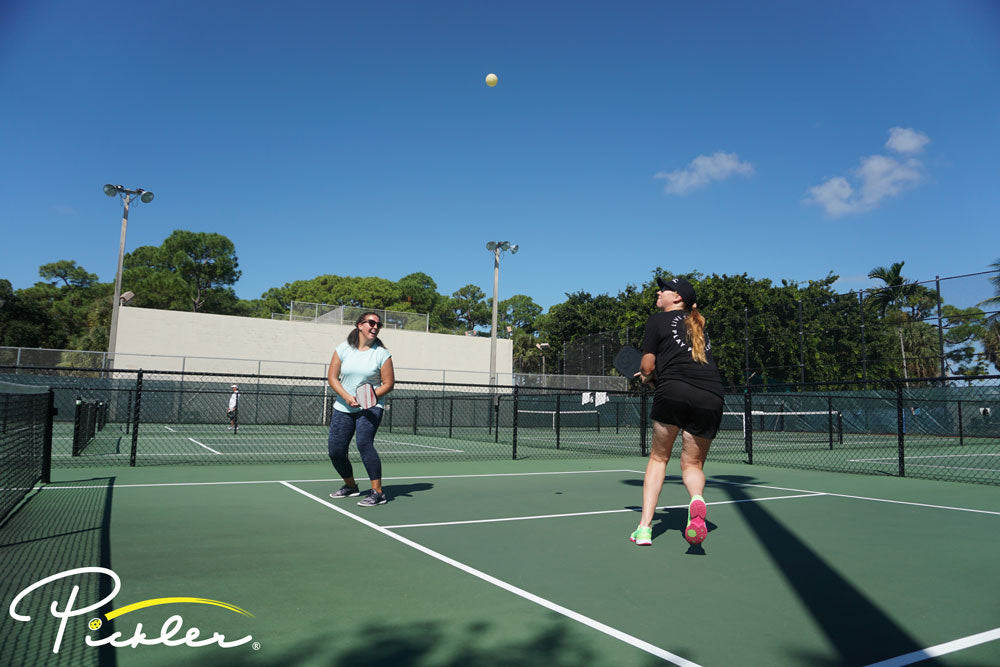
Anticipating and Avoiding the Lob
Most pickleball players have “tells” in their shots (i.e. give away clues as to what shot that they will hit), as well as tendencies to hit certain shots in certain situations. Pay attention to your opponents’ movements, including their footwork, backswings, and paddle angles, which can often telegraph various shots, which may include a lob from time to time. For instance, if your opponents compress and take a low backswing with a relatively flat paddle angle, be ready for the lob. Or, if your opponents like to lob off the forehand dink, anticipate the lob as a possible shot every time you hit a dink to your opponent’s forehand.
In addition to anticipating the lob using clues and tendencies that you pick up on the pickleball court, consider hitting shots that do not permit your opponents to hit an effective lob. Although the lob can be hit from the baseline or inside the baseline (for instance, with a third shot lob), these shots are difficult to execute and are not high percentage shots. As a result, effective lobs from behind, at, or near the baseline will be few and far between—most will be too short for an easy overhead (more on this below) or sail wide or long out of bounds. So, one strategy to avoiding the lob from your opponents is to keep your opponents back near the baseline as much as possible (which is a great strategy in general).
Another great strategy to avoiding the lob from your opponents is to try to target your opponents’ backhands. Generally speaking, most pickleball players will only lob off of their forehand side. So, by keeping the pickleball on their backhand sides, your opponents may be less likely to throw up a lob.
Hitting a Strong Overhead
If you are unable to anticipate and avoid the lob from your opponents (for instance, if your opponents throw up an unexpected, effective lob from the transition area or off their backhand side), then the most you can do is to hit a solid shot in response to the lob. Once you recognize that your opponents are sending a lob in your direction, you have two options (assuming the lob will land within the pickleball court and not out of bounds): (1) try to take the pickleball out of the air with an overhead; or (2) let the pickleball bounce and hit the pickleball off the bounce.
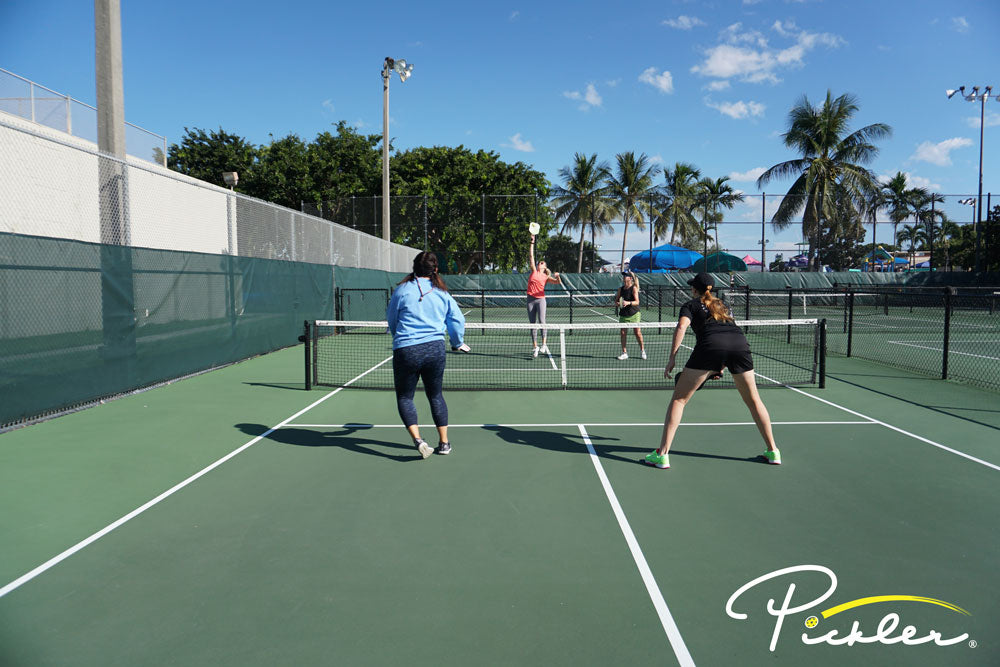
Assuming that the lob is short, or you have enough of a jump to take the pickleball out of the air, then the best defense to a lob may just be a killer overhead. To crush the overhead:
- Immediately rotate your body sideways to avoid backpedaling (which can be dangerous on the pickleball court). Also, be careful not to step forward when preparing to track down the lob. If you step forward too much, you could commit an inadvertent foot fault if you step on the Non-Volley Zone line;
- Raise your paddle up by your ear with your paddle laid back and elbow up, and point your non-paddle hand at the pickleball out in front of your body. To note, this is important to help guide where you will make contact with the pickleball and can also help block the sun on sunny days;
- Move your feet—by moving sideways and not backpedaling—to make sure you are positioned to hit the pickleball out in front of your body. Also, if you are jumping into the air, it is important to correctly time your jump, so that you are making contact with the pickleball at the height of your jump;
- Bring your paddle square to meet the pickleball out in front of your body with full-arm extension (if you are right-handed, think about hitting at 1 o’clock (imagining a clock is in front of you); if you are left-handed, think about hitting at 11 o’clock (imagining a clock is in front of you)). Also, to note, it is important to accelerate up to the point of contact, rather than accelerating down after contact; and
- Finish your overhead by following through the pickleball down and slightly across your body.
Also, be cognizant of your paddle angle. Your paddle angle will dictate where the pickleball will go. Be sure your paddle angle is down into your opponent’s side of the pickleball court, so as not to sail the pickleball out of bounds, but also not so far that you hit the pickleball straight into the net. One reason your paddle angle could be down toward the pickleball net is that could be collapsing your top half, or dropping your head or eyes, at contact. Avoid collapsing your top half and/or dropping your head or eyes at contact.
Lastly, consider adding angles to your overhead that take the pickleball off the court to the left or the right in order to make a more difficult return for your opponents. A strong overhead—especially a strong overhead with angles—will certainly discourage future lobs against you.
Effectively Chasing Down the Lob
If you decide to let the pickleball bounce—for instance, if the pickleball is out of your reach for an overhead or you can make a stronger shot off the bounce—you need to effectively chase down the lob and reset the point. To do this, you will generally need to (1) effectively chase down the lob; (2) work with your partner in doubles pickleball, so that the partner that has the best opportunity to return the lob takes the shot; and (3) hit the best shot to reset the point.
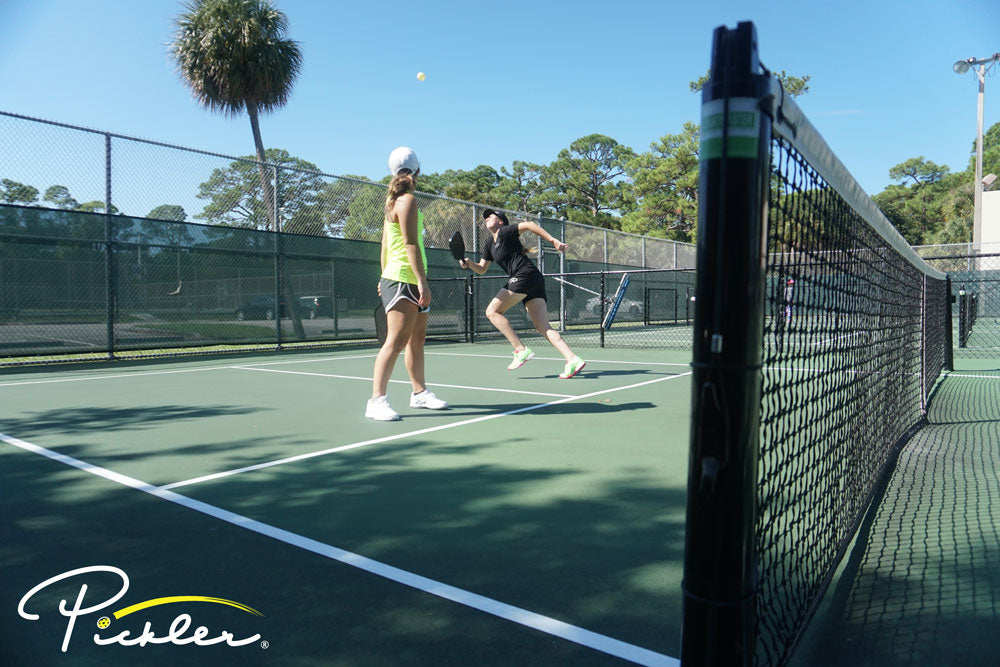
Effectively Chase Down the Lob
To effectively chase down the lob, you will need to drop step (i.e. a small step back and to the side, so that you run backwards, rather than backpedal), turn your body, and run towards the baseline. To set yourself up for the strongest shot off the bounce:
- Run to the side of the pickleball, so that the pickleball is one to two feet to the paddle side of your body (to note, a forehand shot will likely be stronger than a backhand shot, so keeping the pickleball on your paddle side will prepare you for a forehand, as opposed to a backhand);
- Prepare your paddle as you are running;
- Run beyond the point of the bounce, as you should hit the pickleball out in front of your body after the bounce; and
- Firmly plant your paddle-side foot to stop and strike the pickleball.
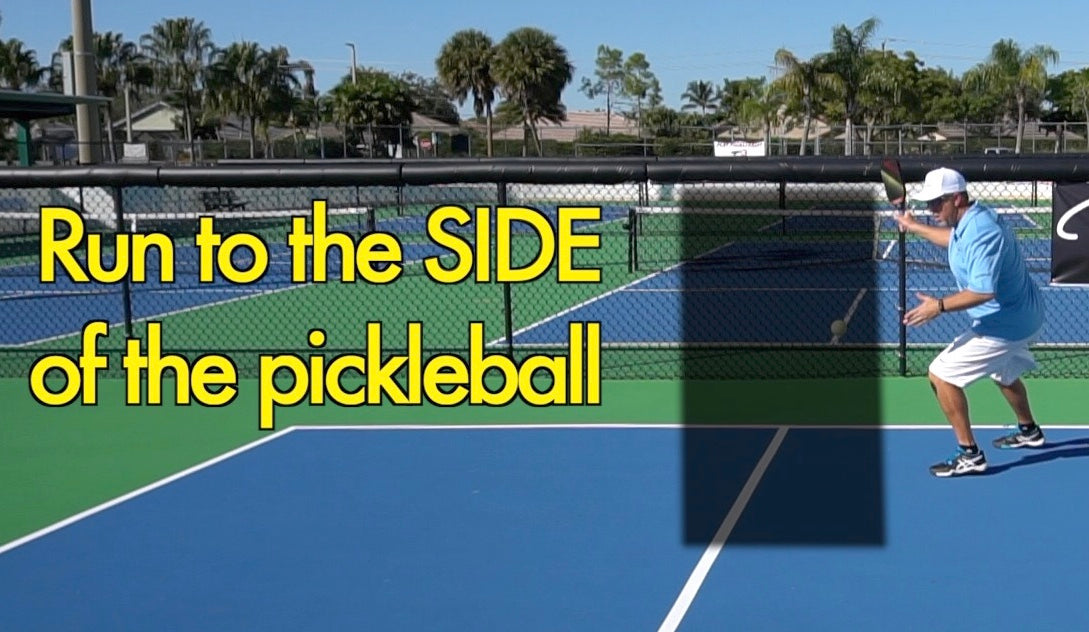
Work with Your Partner in Doubles Pickleball
With any shot on the pickleball court, it is important to work together with your partner in doubles pickleball. This holds true on the lob, too. One key consideration on the lob is whether you or your partner will take the shot. Just like many other shots in pickleball, the player with his or her forehand to the middle of the court is in a better position to return the lob. However, mobility may also be a factor. The player with the stronger mobility may want to take charge on chasing down lobs. So, communication is key when your opponents send a lob into the air.
Regardless of who hits the lob, consider whether you and your partner need to switch sides of the court in order to be ready for the return shot. A switch is effective if a lob pulls one player into the same side of the court as his or her partner. The partner that is not taking the shot off the lob should yell “switch” and move to the other side of the pickleball court. This switching of sides will allow you and your partner to cover more of the pickleball court in the event that your opponents return the pickleball.
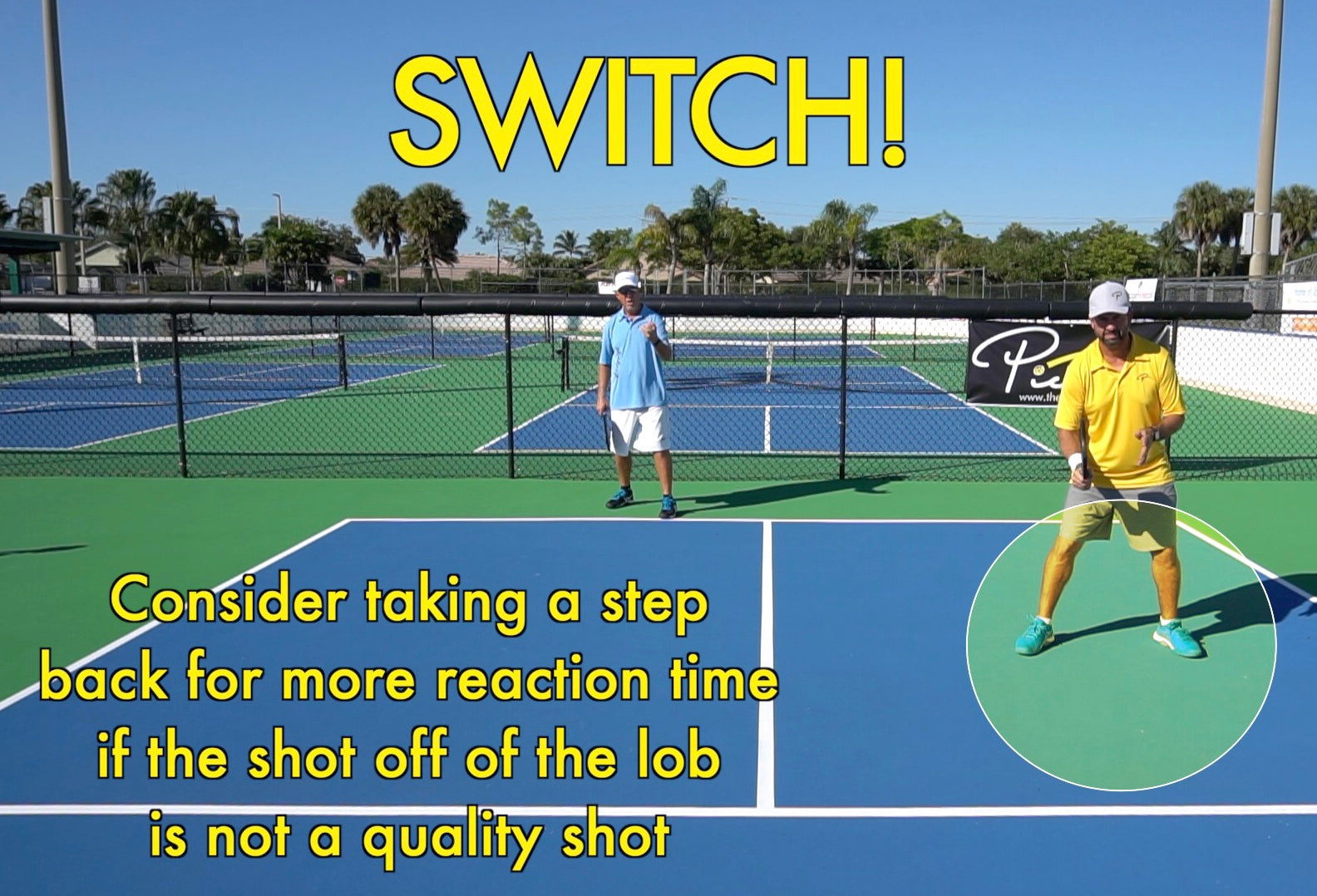
Also, the partner that is not taking the shot off the lob should also consider taking a step or two back to give him or her a bit more reaction time in the event that the shot off the lob is a poor shot. Falling back and pinching the middle of the court can help prepare you and your partner for a strong return from your opponents and keep you in the point. And, remember, if the shot off the lob is a good shot, both you and your partner should try to move in toward the Non-Volley Zone line.
Best Shot to Return the Lob
When returning the lob on the pickleball court (assuming you let the pickleball bounce), the general goal is to reset the point. If you are not hitting an overhead (which is an offensive shot), then you are likely hitting a shot to get you and your opponents back on to neutral footing—in other words, hit a shot that allows you and your partner to get back to the Kitchen line. There are generally three options when returning a lob if you are letting the lob bounce:
1. Drop
The first option is to hit a drop shot after the lob bounces. This is likely the preferred shot off of the lob, as it is the highest percentage shot. A drop shot—particularly one that lands in the Non-Volley Zone on your opponents’ side of the pickleball court—will allow you and your partner to get back to the Kitchen line. Plus, with a drop shot, you have the most time to hit the pickleball, as you can let the pickleball drop low to the ground before hitting your shot. In fact, it may be preferred to let the pickleball drop low, so that you have the most time to compose yourself and prepare for your shot.
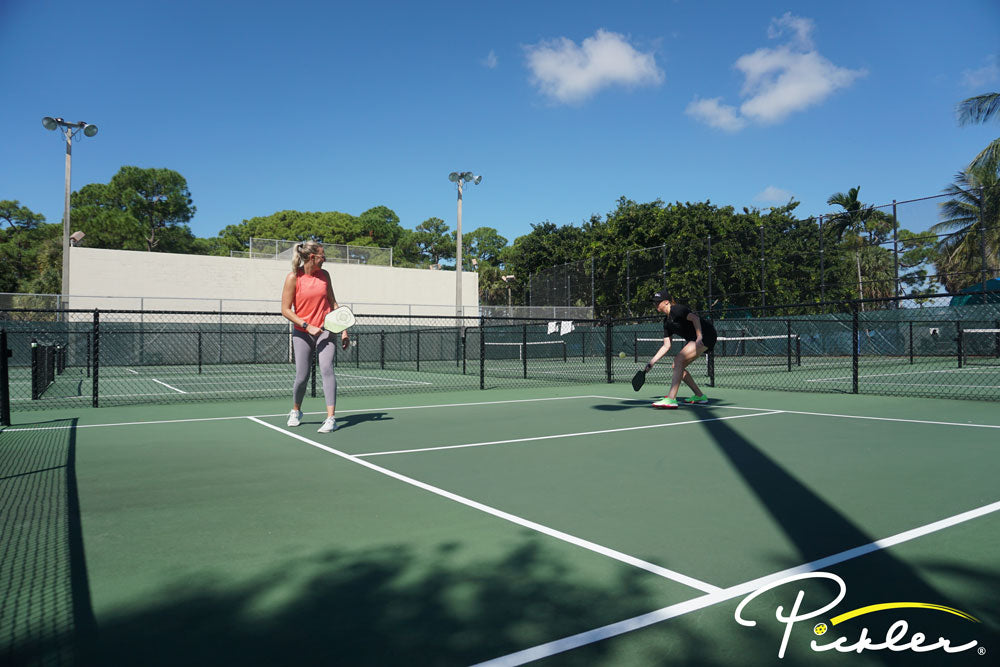
2. Drive
The second option is to hit a drive off of the lob that bounces. This is a more difficult shot, as you are running backward, while, at the same time, trying to generate momentum forward for your drive. This is very difficult shot to execute, but can be unexpected if executed well. Generally speaking, we would recommend a drop over a drive to return the lob.
3. Lob
The last option is to hit another lob in response to the lob that bounces. This shot is a bit risky for the same reasons that you want to keep your opponents back near the baseline in order to prevent the lob—it is low percentage, as you may be likely to hit a poor lob that either results in an easy overhead for your opponents or sails out of bounds (especially if it is windy and the wind is not moving in your favor). However, another lob may be your only option if you are unable to get back in time to get ready for a shot (i.e., a drop). If you decide to throw up another lob, consider hitting the lob very high into the air. Many pickleball players will be uncomfortable with a very high shot. Plus, the high lob will give you and your partner time to reset your feet and prepare for the next shot.
In summary, anticipate and prevent the lob. If a lob still finds its way to you, try to take it out of the air with a killer overhead. If an overhead is impossible, chase the down the lob and communicate with your partner in doing so. Then, try to hit a quality drop shot to reset the point. With more and more lobs being hit on the pickleball court, it is important to know how to beat the lobber. And, with these pickleball tips, you are on your way to doing just that.
WANT MORE PICKLEBALL TIPS AND STRATEGIES?
Want to learn how to hit the perfect lob on the pickleball court?
Plus, if you want more pickleball tips and strategies on every aspect of your pickleball game, check out Pickler’s online video lesson collection called My Pro Pickleball Coach. My Pro Pickleball Coach is a fraction of the price of one clinic or even one lesson, and features over 140 video lessons (over 7 hours of instruction!), as well as a corresponding e-book. These online video lessons are available on demand 24/7 and breakdown every aspect of the sport of pickleball, including pickleball drills, strategy, and advanced concepts, so you will play your best pickleball.
